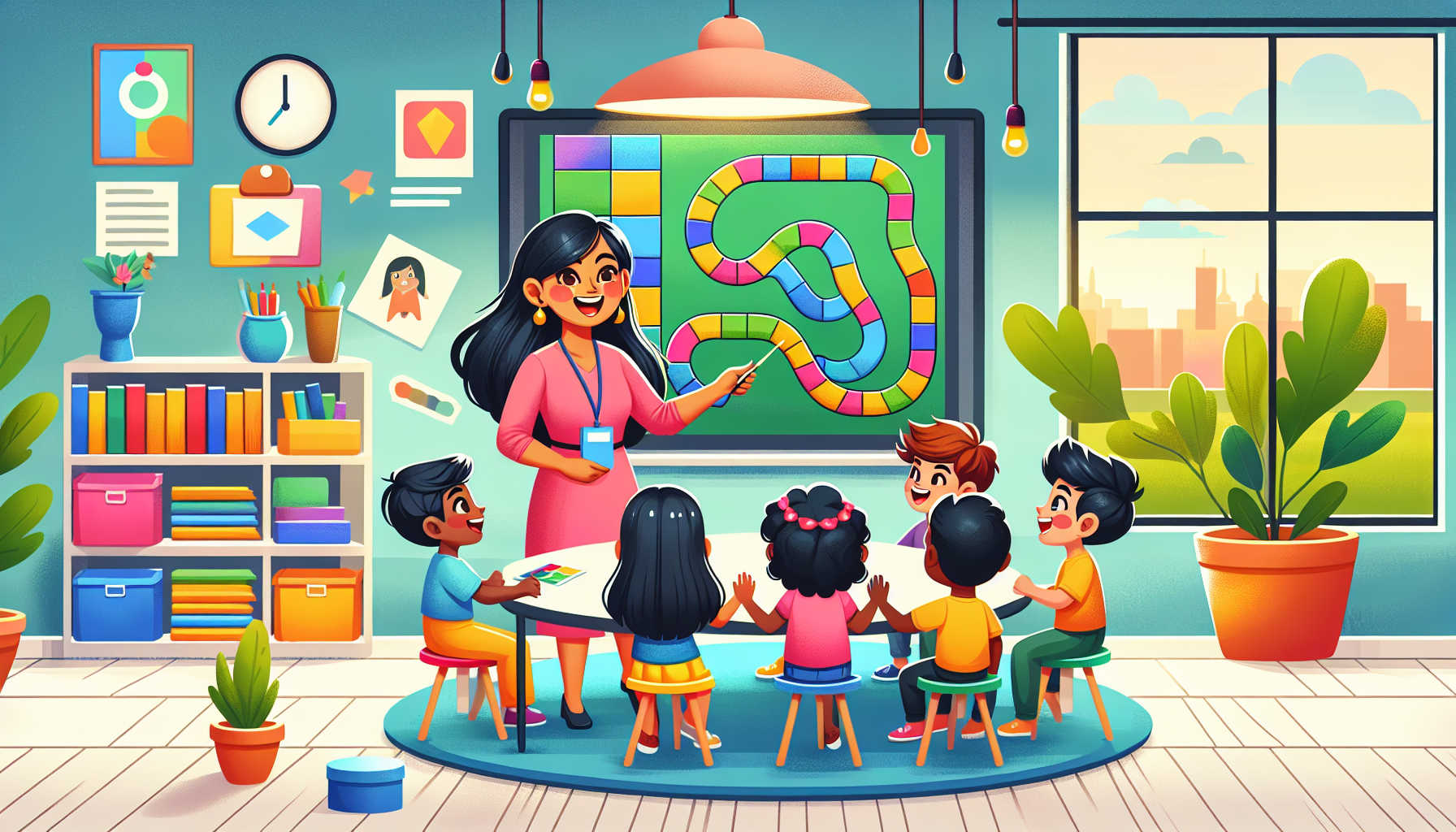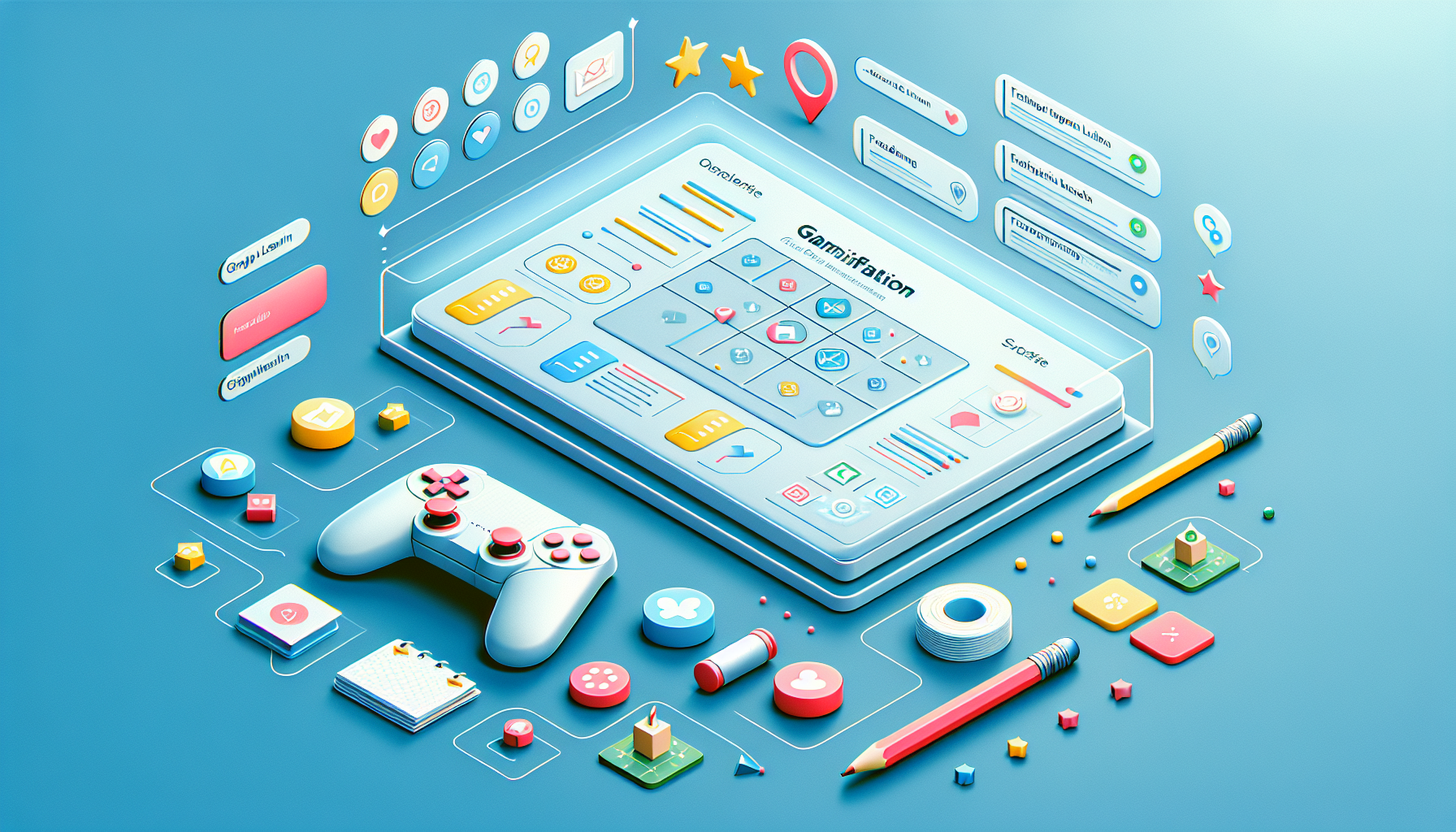Gamification in learning is a hot topic, and it’s easy to see why. Many of us have struggled to stay engaged in traditional education methods, feeling like we’re just going through the motions. If you’ve ever thought, “There has to be a better way,” you’re not alone!
But guess what? You’re in the right place! By the end of this guide, you’ll discover creative strategies to transform your lessons into fun, interactive experiences that keep learners on their toes.
We’ll explore the steps to create a gamified learning experience, from understanding what gamification is all about to tackling the challenges that may come your way. Ready to level up your teaching game? Let’s dive in!
Key Takeaways
- Gamification enhances learning by using game mechanics like points, badges, and challenges to keep learners engaged.
- Start by defining clear learning objectives and understanding your audience to create effective and relatable content.
- Use themes that resonate with learners, and incorporate elements like leaderboards to spark competition.
- Instant feedback is crucial; it helps learners know their progress and areas for improvement.
- Choose the right tools based on your audience’s preferences for a seamless gamified experience.
- Flexibility in activities allows for different learning styles, increasing motivation and participation.
- Regularly measure the effectiveness of gamified learning through metrics, feedback, and performance data to refine your approach.

Steps to Create a Gamified Learning Experience
Creating a gamified learning experience can feel like a daunting task, but breaking it down into manageable steps makes it easier.
Start by defining the learning objectives. What exactly do you want your learners to achieve? Being clear on this helps shape the entire gamification process.
Next, consider your audience. Understand their needs, preferences, and motivations, because a game designed for grade schoolers will look vastly different from one aimed at adults.
Then, choose a theme that resonates with your learners. This could be anything from a treasure hunt to a space mission—pick what excites your audience.
Once you have a theme, think about incorporating elements like badges, points, and leaderboards to spark competition and engagement.
Finally, always keep feedback loops in mind. The best learning happens when participants know how they’re doing, so ensure they receive regular updates on their progress.
Understanding Gamification in Education
Gamification in education is all about using game mechanics to enhance the learning experience.
This means incorporating elements like scoring systems, challenges, and rewards in non-game contexts to motivate and engage learners.
Unlike traditional teaching methods, where the focus might be solely on content delivery, gamification leverages the inherent motivations of games to make learning more interactive.
Think about it: why do people spend hours playing video games? It’s not just the thrill; it’s the sense of achievement, the levels to conquer, and the rewards you gain along the way.
Educational systems can tap into these feelings to create meaningful learning experiences that stick with students.
Benefits of Gamified Learning
The benefits of gamified learning are numerous and can’t be ignored.
First off, it boosts motivation. When learners see that their efforts yield rewards—be it points, levels, or e-badges—they’re more likely to stay engaged.
It also enhances retention. A study by the University of Colorado found that participants in gamified learning environments retained information better than those in traditional settings.
Gamification encourages collaboration, too. Many gamified platforms allow learners to engage with peers, fostering teamwork and communication skills.
Moreover, it provides instant feedback. This allows learners to understand their strengths and areas for improvement without the lengthy waits associated with traditional assessments.
Key Elements of Gamification
When designing a gamified experience, there are essential elements you can’t overlook.
First up is the game mechanics, such as points, badges, and leaderboards. These mechanics provide tangible proof of progress and success.
Next is storytelling. A good narrative can draw learners in and make the material more relatable. Frame learning within a story to make it memorable.
Challenges also play a crucial role; they should be appropriately scaled to keep learners engaged without causing frustration.
Finally, ensure there’s an element of choice. Allowing learners to choose their path or method of engagement increases investment in their learning journey.

Choosing the Right Tools and Platforms
Selecting the right tools and platforms is crucial for successful gamification.
First, evaluate your learners’ preferences and tech-savviness.
If your audience is familiar with digital tools, consider platforms that offer advanced features like analytics or customization. Examples include LMS options that streamline gamified experiences.
If your learners prefer more hands-on approaches, explore options that incorporate physical game elements.
When looking at specific tools, ensure they allow for easy integration with your existing systems.
For example, tools like Kahoot and Quizizz provide engaging quiz formats that blend seamlessly with a competitive platform.
Lastly, don’t overlook user support and community resources. Opt for tools with robust documentation and user communities for troubleshooting ideas and tips.
Designing Engaging Learning Activities
Creating engaging learning activities is all about balancing fun and educational value.
Start by mapping your content to game-like activities. Each activity should align with your learning objectives.
Consider using scenarios or role-playing exercises relevant to real-life applications of the material.
Incorporate different learning modalities—visuals, audio, and kinesthetic elements keep learners engaged.
Group activities can also boost participation, allowing students to collaborate and problem-solve together.
For instance, incorporating breakout sessions during a game-based learning exercise can enhance social interaction.
Don’t forget to allow flexibility in these activities. Give learners choices in how they wish to demonstrate their mastery, which can drastically increase their motivation.
Incorporating Feedback and Rewards
Feedback and rewards are vital components of gamified learning that can significantly affect learners’ experiences.
Start by embedding instant feedback mechanisms that let learners know how they are doing in real-time.
This could be through automated quiz results or reflective prompts after activities.
Make sure your rewards system feels meaningful. It’s not just about points; consider offering levels of achievement or unique badges that signify milestones.
For example, a “Master Researcher” badge for submitting a well-researched project could motivate students to dig deeper.
Create a system where learners can progress at their own pace. Not everyone learns the same way or at the same speed.
Transparency is key here; clearly communicate the criteria for earning rewards and how learners can progress.
Measuring the Effectiveness of Gamified Learning
Evaluating the impact of your gamified learning program helps you understand what works and what doesn’t.
Use specific metrics to assess learners’ engagement and retention rates. Surveys and feedback forms can provide insight into their experiences.
Track performance data over time to identify trends—are learners improving in specific subject areas?
Consider A/B testing different gamification strategies to see which resonates better with your audience.
For example, if using leaderboards boosts participation, you’ll want to analyze how it impacts learning outcomes.
Don’t forget qualitative feedback; informal discussions can reveal a lot about learner motivation and enjoyment.
Regularly revising your approach based on collected data keeps the experience fresh and relevant. Keep an open dialogue with learners about their needs and preferences.

Challenges in Implementing Gamification
Implementing gamification is not without its obstacles, and being aware of these challenges can help you navigate them more effectively.
First, there might be resistance from educators or administrators who are accustomed to traditional teaching methods. It’s important to communicate the benefits of gamification clearly.
Another challenge can be the availability of resources. Developing quality gamified content often requires time, money, and expertise, which may be limited.
Tech issues also come into play. Not every learner has access to the necessary devices or a reliable internet connection, and that can create disparities.
Additionally, striking the right balance between fun and education can be tricky. If the game elements overshadow the learning objectives, you may end up with entertainment rather than education.
Regular updates and maintenance of the gamified system can be a hassle, especially as technology evolves quickly.
Finally, measuring the success of your gamification efforts can be complex, as traditional metrics may not apply. Defining clear success criteria from the start can help with this.
Examples of Successful Gamified Learning Programs
Seeing gamification in action can provide valuable insights into how to implement it effectively.
One popular example is Duolingo, a language learning app that uses points, levels, and streaks to keep users motivated.
Another great instance is Kahoot!, which brings game-based quizzes to classrooms and engages students through friendly competition.
For corporate training, companies like Cisco have adopted gamified platforms to enhance employee engagement while continuously upgrading their skills.
In healthcare education, platforms like HealthQuest use simulation-based learning combined with gamification to teach real-world skills effectively.
These examples demonstrate how with the right approach, gamification can significantly improve learning experiences across various contexts.
Future Trends in Gamified Learning
The landscape of gamified learning is always evolving, and several trends are shaping its future.
One trend to watch is the rise of personalized learning experiences. With data analytics, platforms can tailor gamified activities to fit individual learning styles and progress.
Another trend is the integration of virtual and augmented reality. These technologies can create immersive environments that make learning feel like an adventure.
Collaboration will continue to be key, as more platforms are incorporating social features that allow learners to work together in real-time.
Additionally, artificial intelligence could enhance gamified learning by analyzing learner behavior and adapting experiences accordingly.
Lastly, as awareness of mental health grows, incorporating gamification in social-emotional learning will become increasingly important.
Staying ahead of these trends can help educators and trainers create engaging and effective learning experiences for the future.
FAQs
Gamification in education involves integrating game elements into learning environments to enhance student engagement, motivation, and retention. It uses mechanics like points, badges, and challenges to create a more interactive educational experience.
Gamified learning increases motivation, enhances engagement, promotes collaboration, and supports retention of information. It creates an enjoyable learning environment that encourages students to take risks and embrace challenges, ultimately improving learning outcomes.
Challenges in implementing gamification include resistance to change, balancing educational content with game elements, and ensuring equitable access to resources. Additionally, poorly designed gamification can lead to disengagement rather than motivation.
To measure effectiveness, you can use metrics such as student engagement levels, assessment scores, feedback surveys, and completion rates. Analyzing these metrics provides insights into the impact of gamification on learning outcomes.
